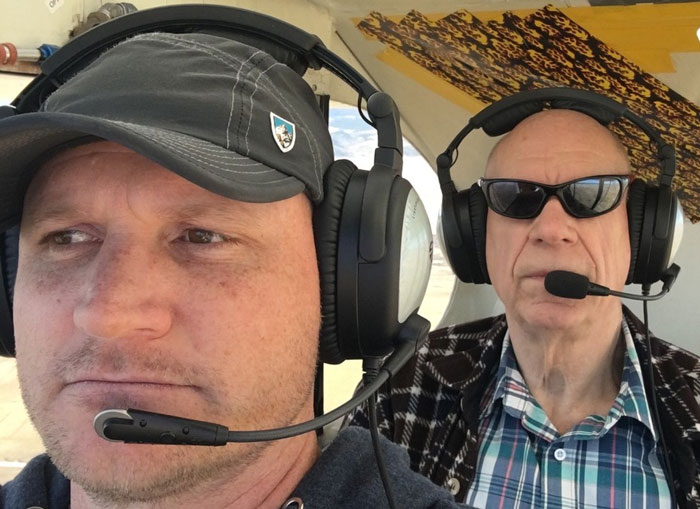
By Jeremiah Kalb
Radiologist Justin Lamb’s favorite route to work requires much more forethought than most people give to their work commute. At least when the weather is good.
If Lamb has ten miles of visibility and clear skies, he prefers to strap into his pristine 1959 Cessna 180 and fly to one of his hospital assignments in Salmon, Driggs, or Afton, Wyoming.
At a cruising speed of 150 miles per hour and an altitude of 8,500 feet, the view of Eastern Idaho is spectacular in comparison to the bumper to bumper traffic found in Rexburg. “Flying from here to Salmon is just gorgeous,” Lamb says.
Nestled in the beautiful Lemhi Valley with the Beaverhead Mountains looming over, not many work commutes in the world can compare to what he sees out his cockpit window while in flight to Salmon.
Towering peaks, deep canyons, dense forests, big game, and the wild and scenic Salmon River always bring a smile to Lamb’s face.
After all, this is the backyard of the Lewis and Clark Expedition and the “The River of No Return”- aptly named as Clark mindfully retraced his steps to look for a safer route after assessing and taking note of the mighty river.
Lamb chooses to be methodical and disciplined when it comes to deciding if it will be a fly day or not.
“If I need to go to Salmon on a Wednesday, I start looking at the weather on Sunday,” Lamb says.
He follows three rules to stay safe in the skies: Maintain your aircraft, stay proficient, and watch the weather. “If you have time to spare, go by air, meaning the weather might stop you,” he explains.
When Lamb first arrived in Rexburg back in 2007, he would drive past the airport each morning thinking he needed to go check the place out. After all, this is the sort of thing he did as a teenager back in Mesa, Arizona.
“Back then there were no gates and you could just ride your bike up and down the rows of hangars,” he says. If a hangar was open, he’d approach the pilot and strike up a conversation. “Pilots always want to show you their airplane and they’re generally pretty friendly people,” Lamb adds. Those early days at Falcon Field Airport solidified his dream of becoming a pilot one day.
Fortunately, Lamb’s flying bug survived the rigors of medical school, an internship, radiology residency, and a fellowship in Texas.
It was only matter of time before Lamb would be up in the air taking lessons from Lewis Hart, a well-respected and greatly admired aviator in the area. Hart saw the Teton Dam break from the air and completed a handful of rescue missions for some people stranded in the middle of a barley field, surrounded by swirling water.
“He’s just a great man,” Lamb says of Hart. The quality of Hart’s instruction is on display every time Lamb advances the throttle of his Cessna and quickly lifts into blue skies.
Despite Lamb’s home base being located in rural Idaho, his flight log is impressive for a single engine land and sea license holder: Nome, Alaska, Oshkosh, Wisconsin (AirVenture annual air show), the Bahamas, and many other stops in between.
The parallels between Lamb’s reading room and flying are strikingly similar. “When I pull up a CT of the chest or MRI of the brain, I look at the same structures every time in the same sequence,” he says. “And it’s the same with flying. I do it [checklist] the same way every time. Even if I don’t think it needs to be done.”
So we see that excellence both on the ground and in the air is not an act, but a habit.
Photo: Justin Lamb, D.O. (front) and Lewis Hart (back) inside their partially restored Piper J-3 Cub airplane.
